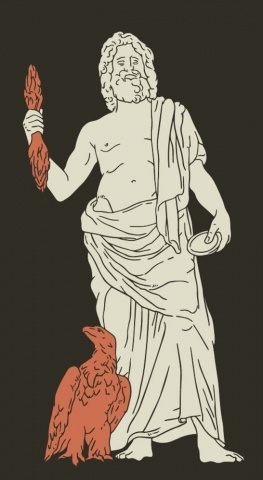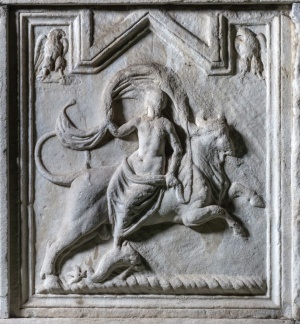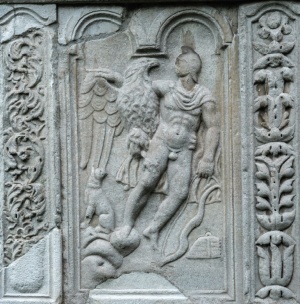Jupiter - The Lover
Today, infidelity is frowned upon in almost all parts of the world, in some places even physically punished. It has, however, been present throughout history, in different cultures and across the social classes, only the attitude towards it and its consequences has varied.
In Antiquity, infidelity was not a taboo and was even acceptable in certain circles, although women's subordinate status to men meant that different rules and regulations applied to the sexes; this is reflected in mythology.
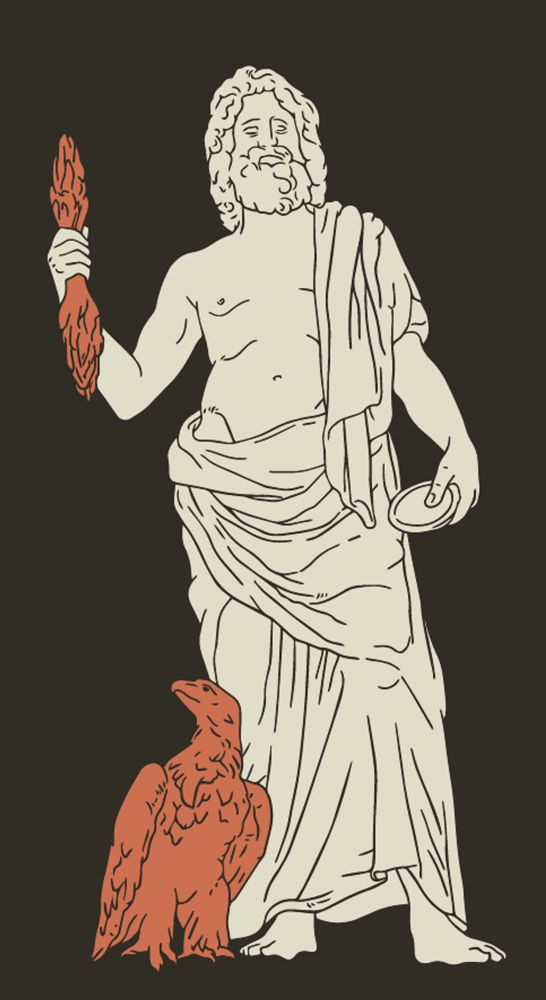
Interpretive Drawing of the statue of Jupiter.
Author Gorazd Koščak
The stories of the Roman gods were largely adopted directly from Greek mythology. As for Greek Zeus, the stories about the supreme god Jupiter and his affairs or infidelities are particularly numerous. Jupiter was married to the goddess Juno, but engaged in many love affairs with both goddesses and mortal women. He frequently seduced women by assuming other forms. He abducted Europa in the form of a bull, for example, and carried the young Ganymede to Olympus in the form of an eagle. He seduced Antiope as a satyr, appearing to Leda as a swan, to Alcmene as her husband and to Callisto as Diana. For Danaë, he turned himself into golden rain, for Aegina into a flame and for Io into a dense fog.
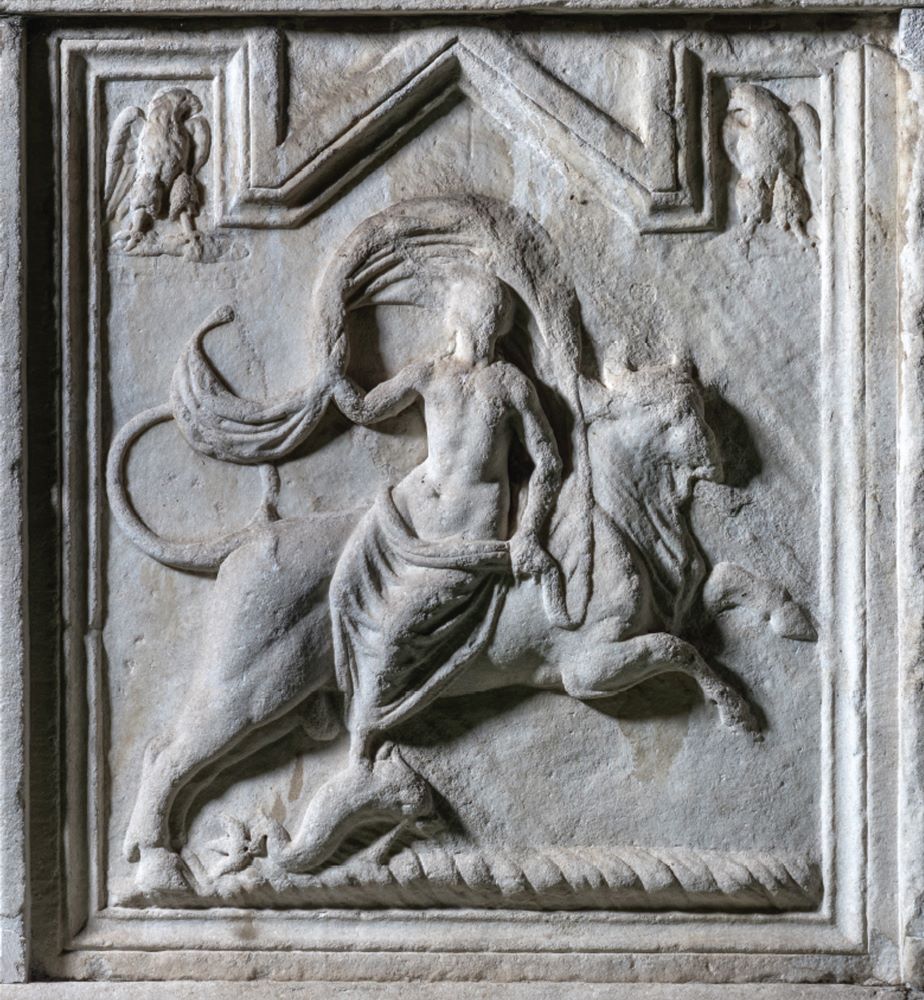
Relief showing the Rape of Europe on the front of the tomb of the Ennii family in Šempeter v Savinjski dolini (mid-2nd century AD).
Photo: Archive Celje Regional Museum
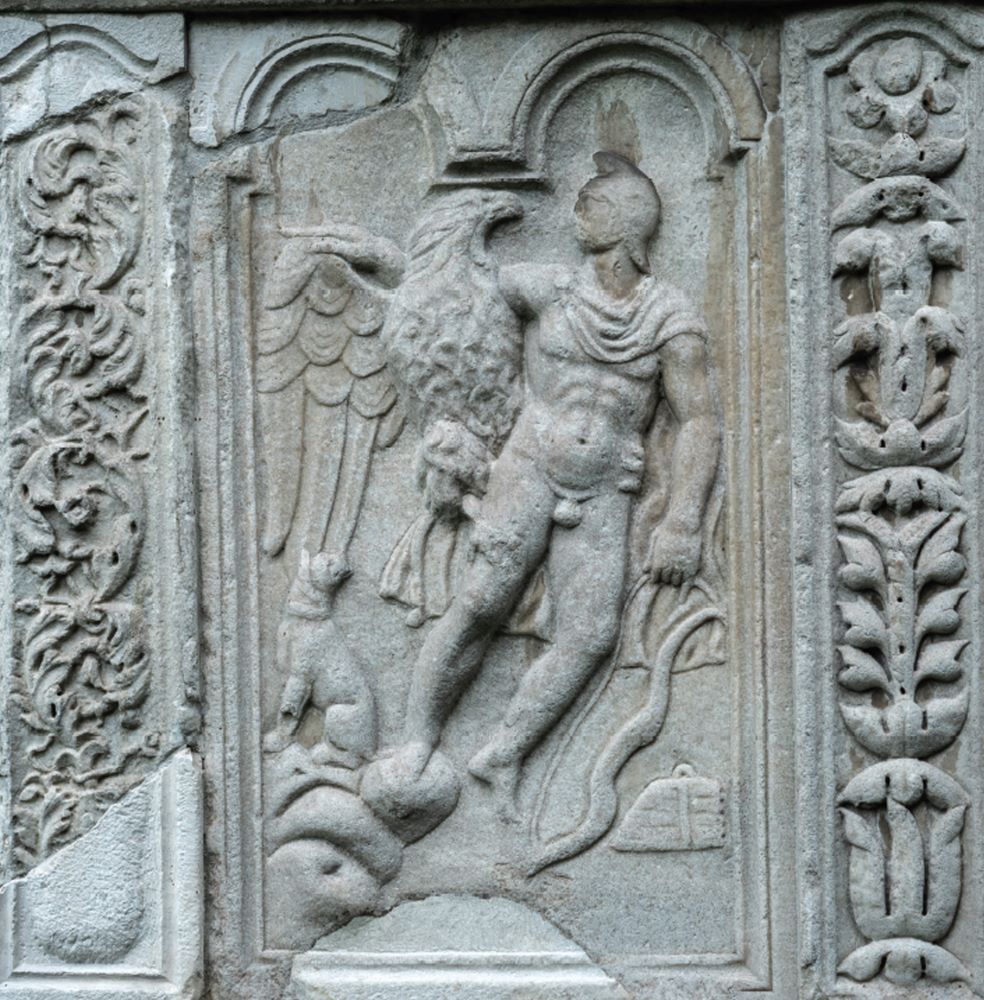
Relief depiction of Ganymede on the right side of the tomb of the Ennii family in Šempeter v Savinjski dolini (mid-2nd century AD). Jupiter, in the guise of an eagle, is raising Ganymede to the sky.
Photo: Archive Celje Regional Musuem
All these myths mirror the attitudes of the Greek and Roman societies towards infidelity, as well as gender inequality. Jupiter, who was the instigator of infidelity, suffered no consequences for his actions, whereas his lovers and their offspring suffered the wrath of the jealous Juno in various forms and sometimes long after the deed was done.
Maja Bausovac, Jure Krajšek
Pokrajinski muzej Celje
Image gallery
